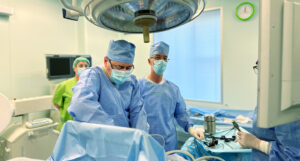
Gallstone disease is one of the most common pathologies of the digestive system. According to the WHO, up to 10% of the world’s population faces this problem, and in Ukraine the incidence among adults reaches 12-15%. At the same time, women get sick two to three times more often than men due to hormonal characteristics, pregnancy, and other factors. People over 40 years old, those with a genetic predisposition, obesity, or diabetes are particularly susceptible to gallstones.
Unfortunately, gallstones are often asymptomatic, which makes early diagnosis difficult. Usually, the disease is detected by chance during ultrasound examinations, but in case of progression, serious complications are possible that require immediate intervention.
Oleksandr Fedosenko, a surgeon of the highest category, head of the surgical department atLeleka Medical Center, explains why stones appear, what treatment methods exist, and what the consequences of ignoring the problem are.
Why do stones form?
Gallstones are formed due to metabolic disorders when the balance of bile components changes. The main types of stones are:
Risk factors include:
How to recognize the problem?
In most cases, cholelithiasis is asymptomatic, and stones are detected by chance during an ultrasound examination of the abdominal cavity. However, in some situations, patients may notice:
Acute intense pain may indicate the development of complications, such as acute cholecystitis, and requires immediate medical attention.
How to treat gallstone disease?
The only effective treatment for gallstones is surgical removal of the gallbladder. The gold standard is laparoscopic cholecystectomy, a minimally invasive surgery performed through small punctures in the abdominal wall. This method ensures rapid recovery of patients who can be discharged the next day.
At the same time, ignoring the problem can lead to serious complications, such as
To reduce the risk of developing gallstones:
Cholelithiasis is not a sentence, but a reminder of the importance of a healthy lifestyle and timely medical attention. Take care of your health and remember: any disease is better prevented than cured.